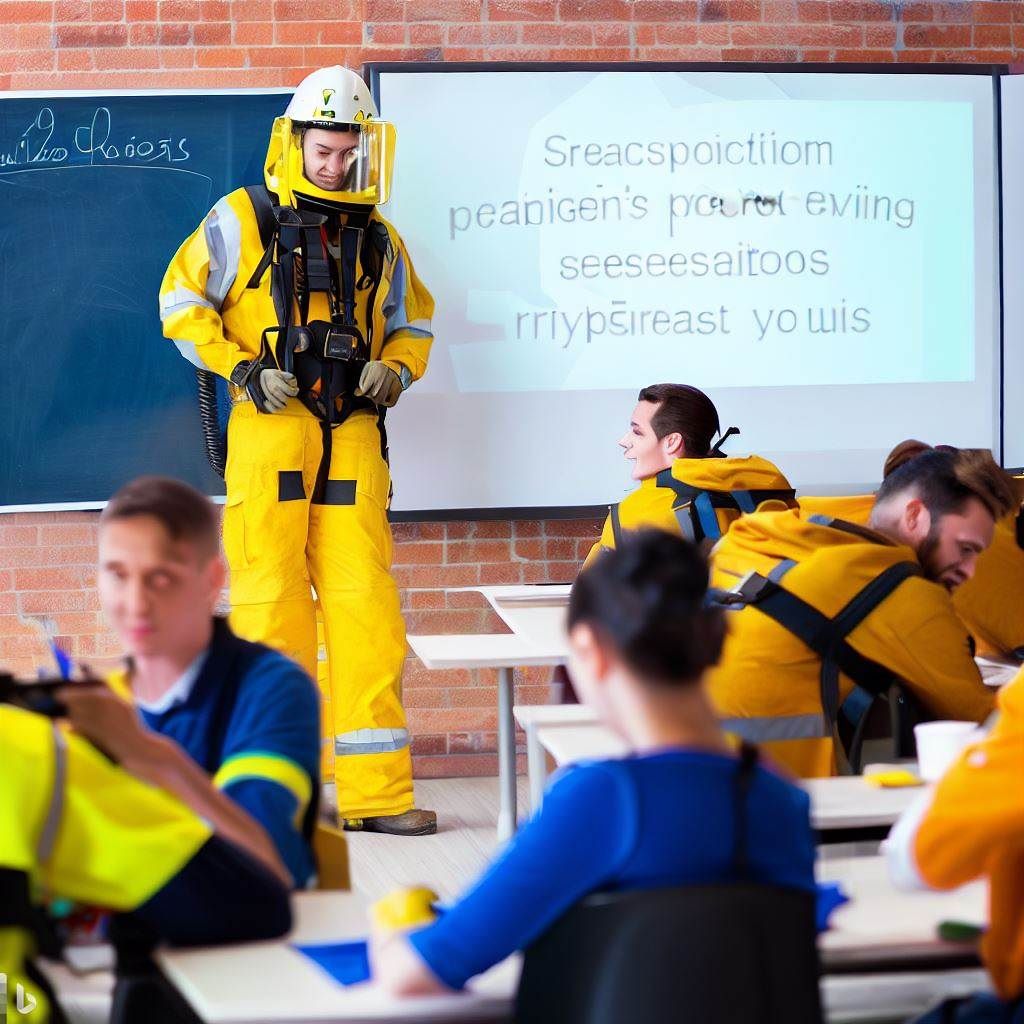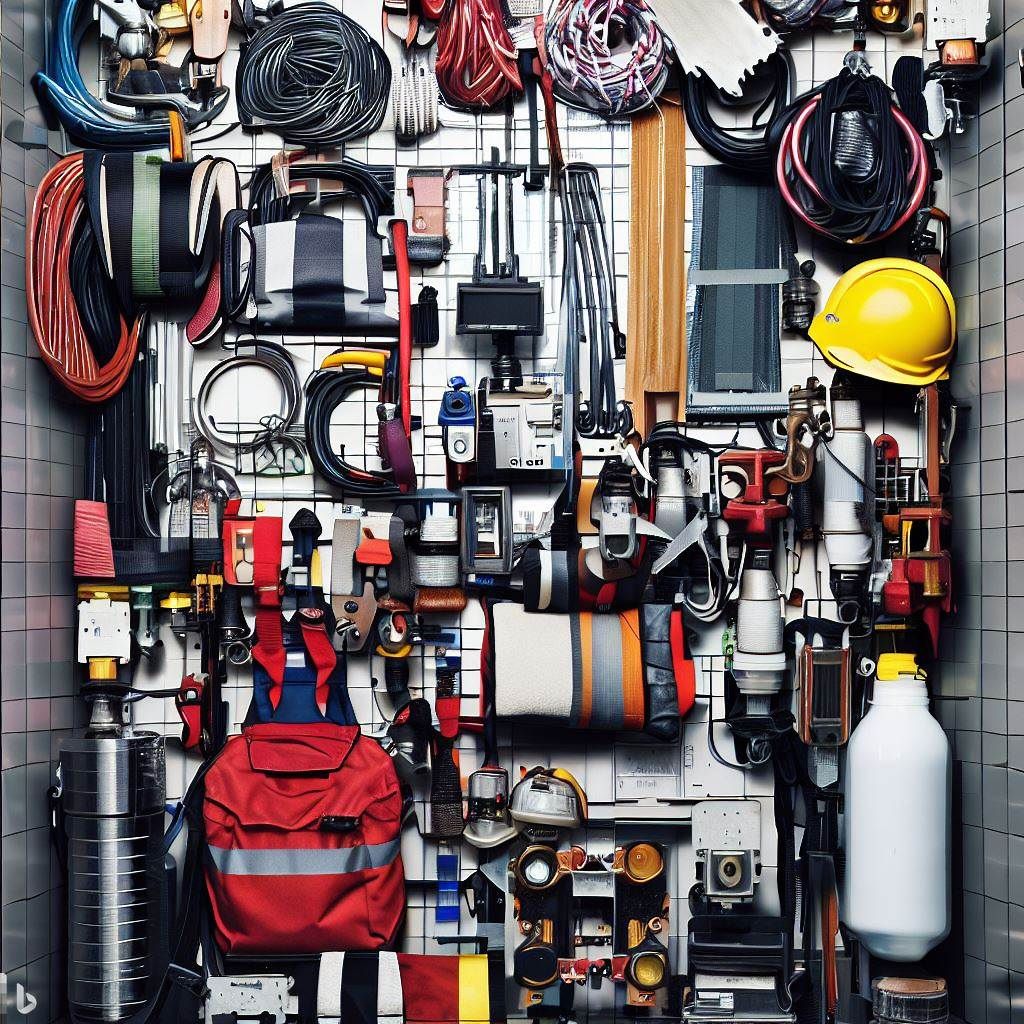The Critical Differences Between Confined Space Awareness and Entry Explained
Confined spaces are a unique challenge in many workplaces. They are not designed for human occupancy but are often necessary for maintenance, repair, or inspection. Confined spaces include tanks, vessels, silos, storage bins, hoppers, vaults, pits, manholes, tunnels, equipment housings, ductwork, pipelines, etc. The danger in these spaces arises from their restrictive entry and exit points, lack of proper ventilation, and exposure to hazardous substances or conditions.
It’s important to note that confined spaces are not necessarily small. A space can be vast and still be considered confined if it has limited or restricted means for entry and exit. Remembering that these spaces can exist in almost any industry, from manufacturing to utilities, construction to agriculture, is also pertinent.
Confined spaces can be hazardous environments due to their potential to trap or asphyxiate workers. They may contain lethal gases or vapors, engulfment hazards, or have an oxygen-deficient atmosphere. They can pose significant health and safety risks without the proper training, equipment, and procedures.
Understanding Confined Space Awareness
Confined space awareness involves understanding what constitutes a confined space, recognizing the potential hazards, and knowing the protocols for safe work practices. It’s the first step in dealing with confined spaces and is usually aimed at all personnel who may come into contact with these areas, including managers, supervisors, and workers.
Recognizing a confined space is the first aspect of awareness. It requires understanding the definitions and characteristics of confined spaces. The next aspect is hazard recognition. This involves identifying the potential hazards that may be present in the confined space, such as toxic gases, oxygen deficiency or enrichment, flammable or explosive atmospheres, and physical hazards.
The final aspect of confined space awareness is understanding safe work practices. This includes knowing the correct procedures for entering and working in confined spaces, using the appropriate protective equipment, and being aware of emergency procedures. It’s about understanding the risks and knowing how to mitigate them.

The Importance of Confined Space Entry
While confined space awareness is about knowing and understanding, confined space entry is about action. It involves entering and working in confined spaces, which requires more training, expertise, and equipment. Strict protocols and procedures govern confined space entry to ensure the safety of the workers.
Confined space entry requires careful planning. Before entering a confined space, a risk assessment must be conducted to identify the potential hazards and determine the necessary control measures. The space must be tested and monitored for hazardous atmospheres. Suitable personal protective equipment must be selected and used.
The entry itself must be controlled through a permit-to-work system. This system ensures that entry is only allowed under specific conditions and that all necessary safety measures have been implemented. The permit specifies the work to be done, the personnel involved, the equipment to be used, and the emergency procedures.
Confined Space Awareness Vs. Entry: The Critical Differences
While both confined space awareness and entry are critical for safety, they serve different purposes and require different levels of training. Awareness is about understanding the risks and procedures, while entry is about implementing these procedures and performing the work within a confined space.
Confined space awareness is typically a prerequisite for confined space entry training. It provides the basic knowledge required to understand the dangers associated with confined spaces and the importance of following safe work practices. It is generally aimed at a broad audience, including anyone encountering a confined space in their work.
Confined space entry, on the other hand, is much more specialized. It is intended for workers entering and working in confined spaces. This training includes practical skills such as using entry and rescue equipment, testing and monitoring the atmosphere and implementing emergency procedures.
The Role of Training in Confined Space Awareness
Training plays a crucial role in confined space awareness. It equips workers with the knowledge they need to recognize confined spaces, understand their hazards, and work safely around them. Without this training, workers may unknowingly expose themselves to serious risks.
Confined space awareness training should cover a range of topics, including the definition of a confined space, the potential hazards, the procedures for safe work practices, and the use of protective equipment. It should also cover emergency procedures, including evacuation and rescue.
Training should not be a one-time event. Since confined space hazards can change over time, it’s important to have regular refresher training. This ensures that workers’ knowledge is up-to-date and they remain aware of the risks associated with confined spaces.
The Importance of Proper Procedures for Confined Space Entry
Proper procedures are essential for confined space entry. They provide a structured approach to dealing with the risks associated with confined spaces and ensure that all necessary safety measures are implemented before, during, and after entry.
Procedures for confined space entry should cover a range of areas. They should provide guidelines for conducting a risk assessment, testing and monitoring the atmosphere, selecting and using personal protective equipment, controlling entry through a permit system, and implementing emergency procedures.
These procedures should be documented and made available to all relevant personnel. They should also be regularly reviewed and updated to reflect changes in the work environment or the nature of the confined spaces.
Case Studies: The Consequences of Inadequate Confined Space Awareness and Entry
The consequences of inadequate confined space awareness and entry can be severe. Numerous case studies illustrate the dangers of confined spaces and the importance of proper training and procedures.
One such case involved a worker who entered a confined space without testing the atmosphere. Unaware that the space contained a highly toxic gas concentration, the worker quickly overcame and lost consciousness. Despite the efforts of his colleagues to rescue him, the worker sadly did not survive.
Another case involved a group of workers who were carrying out maintenance work inside a large tank. Without a proper entry permit system, the workers were unaware of the need to monitor the atmosphere inside the tank continuously. As a result, they were exposed to a build-up of toxic fumes and several of them became seriously ill.
Compliance and Legal Requirements: Confined Space Awareness and Entry
In many jurisdictions, confined space awareness and entry are not just good practices but the law. Legislation often requires employers to train workers, develop safe work procedures, conduct risk assessments, and implement a permit-to-work system for confined space entry.
Compliance with these legal requirements is essential for protecting workers’ safety and avoiding penalties. Non-compliance can result in fines, prosecutions, and even imprisonment for serious violations.
It’s also worth noting that compliance isn’t a one-time thing. Employers must ensure that their practices remain compliant over time. This means regularly reviewing and updating their procedures, providing refresher training to workers, and staying informed about changes to the legislation.

Choosing the Right Confined Space Awareness and Entry Courses
Choosing the right confined space awareness and entry courses is crucial for ensuring workers receive the appropriate training. The courses should be comprehensive, cover all the necessary topics, and be taught by qualified instructors with practical experience in confined spaces.
The courses should also be tailored to the specific needs of the workers and the nature of the confined spaces they may encounter. For example, a course for workers in the construction industry might focus on specific hazards like trench collapses. In contrast, a course for workers in the chemical industry might focus on chemical exposure and fire hazards.
Choosing courses that offer practical training, not just theoretical knowledge, is also important. Workers should be able to practice using entry and rescue equipment, conducting atmosphere testing, and implementing emergency procedures.
Conclusion: The Importance of Understanding the Differences Between Confined Space Awareness and Entry
In conclusion, understanding the differences between confined space awareness and entry is critical for ensuring safety in the workplace. While both are important, they serve different purposes and require different levels of training.
Confined space awareness is the foundation, providing workers with the basic knowledge to recognize confined spaces and their hazards. Confined space entry builds on this foundation, equipping workers with the practical skills to enter and work in these spaces safely.
By understanding these differences, employers can ensure they provide the appropriate training and implement the necessary procedures to protect their workers. They can also meet their legal obligations and maintain a safe and compliant workplace.
Frequently Asked Questions:
What is a confined space?
A confined space is an area that is large enough for a worker to enter and perform work, has limited or restricted means of entry or exit, and is not designed for continuous occupancy.
What are the hazards associated with confined spaces?
Some of the hazards associated with confined spaces include poor air quality (lack of oxygen or presence of toxic gases), fire and explosion risks, physical hazards (such as entrapment or engulfment), and psychological stress.
What is the difference between confined space awareness and entry?
Confined space awareness refers to the knowledge and understanding of the hazards associated with confined spaces. It involves knowing how to recognize a confined space and understanding the risks involved in working in one. Confined space entry refers to entering a confined space for work purposes. It involves following specific procedures to ensure safety while working in a confined space.
What is the role of training in confined space safety?
Training is crucial in ensuring safety. Workers required to enter confined spaces must receive training on recognizing confined spaces and their associated hazards. They must also be trained to use personal protective equipment (PPE) and follow specific procedures for working safely in confined spaces.
What are the legal requirements for confined space awareness and entry?
The legal requirements for confined space awareness and entry vary depending on the country or region. In general, employers are required to train workers to enter confined spaces. Employers must also ensure that workers are aware of the hazards associated with confined spaces and are trained to work safely in them.
How can I choose the right confined space training courses?
When choosing a confined space training course, it is important to consider factors such as the course content, duration, cost, and accreditation. The course should cover hazard identification and control measures, PPE use, emergency procedures, and rescue techniques. You may also consider courses accredited by recognized organizations such as OSHA or IOSH.
